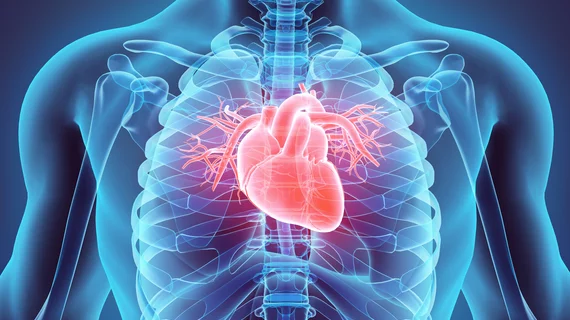A simplified cardiac magnetic resonance (CMR) protocol using a contrast agent allowed clinicians in Peru to diagnose heart ailments more quickly and cheaply, a new study found. The results, published online Aug. 29 in the Journal of the American Heart Association, highlight a potential pathway to realizing the benefits of CMR in developing nations.
CMR in high-income countries provides a range of clinical insights including cardiac function, scar, perfusion, flow, mapping and angiography, noted senior study author James C. Moon, MD, and colleagues. But the testing runs about 45 minutes and is often too expensive for implantation in low- and middle-income countries, the researchers said.
Using a protocol first tested in the United Kingdom, Moon et al. analyzed the utility of a more rapid approach “focusing on just measuring cardiac volumes and scar for deployment on existing scanners in the developing world.”
Ninety-eight Peruvian patients were scanned using the new CMR technique, which took 18 minutes on average and cost $150 per patient. Importantly, CMR impacted the clinical management of 56 percent of the participants—uncovering unsuspected diagnoses in 19 percent and resulting in changes in therapy in another 37 percent.
“Our CMR strategy was three to five times cheaper than current CMR exams in Peru,” Moon, a professor at Bart’s Heart Centre at St. Bartholomew’s Hospital in London, said in a press release. “It also can be delivered two to three times faster and is easier than conventional CMR.”
The proportion of patients whose clinical management was affected by rapid CMR was on par with previous percentages reported from conventional CMR, the authors said.
“We contend that CMR could be made faster, cheaper, and easier, which would increase its utility in the developing world,” they wrote. “The core incremental diagnostic utility of CMR over other methods is left ventricular function and late gadolinium enhancement (LGE) imaging for scar.”
Most of the patients in the study were diagnosed with cardiomyopathies—26 percent hypertrophic cardiomyopathy, 22 percent dilated cardiomyopathy and 15 percent ischemic cardiomyopathy. But 12 other pathologies were identified as well, including congenital heart disease, amyloidosis, genetic syndromes, valve diseases and tumors.
“The rapid CMR protocol was embedded in clinical care with training and education, which resulted in important and frequent patient management changes that appear beneficial for both patients and the healthcare system,” the authors wrote. “The impression is that resource scarcity is not a justification for the absence of key diagnostic tests in the developing world.”
In a related editorial, Christopher M. Kramer, MD, with the University of Virginia Health System, said broad implementation of rapid CMR will require a great deal of training and initial supervision.
“To make this proof‐of‐principle study a reality in much of the developing world, much work is ahead to train imagers at sites with appropriate scanner technology,” he wrote. “Only in this way will an abbreviated protocol for evaluation of cardiomyopathies be implemented. This is an exciting time for the potential of broadening the impact of CMR throughout the developing world.”

